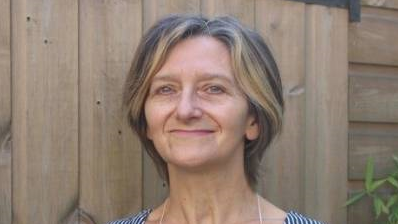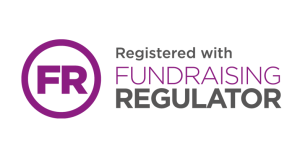10 Jul 2020
An interview with Linda Cundy

Linda will be with Wimbledon Guild Counselling Training for a special 2 day event in 2021 The Therapist's Own Attachments
Linda Cundy is an attachment-based psychoanalytic psychotherapist, supervisor, and independent trainer who has a long association with the Wimbledon Guild. She has written and edited three books to date (Love in the Age of the Internet: Attachment in the Digital Era; Anxiously Attached: Understanding and Working With Preoccupied Attachment; and Attachment and the Defence Against Intimacy:
Understanding and Working with Avoidant Attachment, Self-Hatred, and Shame) as well as a number of articles published in professional journals. She has a private psychotherapy practice in North London.
Your original dates for this event were postponed due to the C-19 pandemic. What are your thoughts about how the pandemic has affected the process of therapy?
A lot has been written about this by others and I may have nothing new to add. We'll see the long-term effects more clearly with hindsight.
My resistance to online therapy is on record, but when I put together "Love in the Age of the Internet, published in 2015, I couldn't have imagined a situation where face-to-face therapy would not be possible. It is true that I have experienced some powerful "moments of meeting with clients via Zoom, but I continue to feel that we lose too much 'in 2D.' From necessity we have adapted, but there are still technology problems - every day at least one or two of my sessions are disrupted by dropped Internet connection, and phone sessions are usually conducted via mobile phones with similar issues. Another loss concerns the quality of silence; when neither person is speaking, some platforms shut down sound. All the small quiet noises of breathing, wriggling in the chair, sighing… all are lost. For me, this makes attunement more difficult.
For clients, a further loss is transitional space - the journey to therapy when they can get into the zone, and afterward when processing can take place. Now, as soon as the session ends, many clients are thrown back into family life, a work call or whatever. Therapy requires effort, and travelling to appointments is an important part of their commitment.
No doubt some excellent therapeutic work has taken place during the lockdown, but I am concerned that those clients who may prefer to continue online when it is no longer necessary are the very ones - those who have avoidant / dismissing defences - who would most benefit from the challenging intimacy of traditional '3D' contact. I appreciate that for some with a history of trauma, therapy online may feel safer, but I would always work toward clients coming into the therapy room. If the aim of therapy is to help people become more secure, being able to sit with another person needs to be practiced.
Aside from the matter of technology, the therapeutic process has been affected in other ways. Given the nature of the Covid-19 virus, many of my clients have expressed genuine care and concern for my health - their attachment to me being acknowledged for the first time. Traditional boundaries have often been challenged; I try to be clear and consistent with mine, but some clients are more relaxed. Of course, I have seen inside their homes, their natural habitat; I've seen one in her pyjamas, met the pets, and even a couple of children. And considering when to return to face-to-face meetings can require disclosing aspects of one' private life; we may want to delay for longer if we have partners or family who are also working from home, if we are shielding someone vulnerable, or if the therapist him- or herself is particularly at risk due to a medical condition that we would not usually need to reveal. Of course, the fantasies that are evoked about the therapist' personal life can be explored but sometimes personal disclosure is forced uncomfortably upon us and our clients, and can raise their anxiety about our availability and health unnecessarily.
Although the option to work online allows for greater flexibility for both client and therapist, and I may take advantage of that from time to time in the future, I am looking forward to welcoming clients back to my little consulting room with the garden view before too long.
Your CPD weekend is a space for therapists to explore their own attachment history, what benefit do you feel this understanding can bring to the therapeutic relationship?
One important aim of attachment-based therapy is to help develop a coherent, rich and complex narrative about our own lives and identity. As counsellors and psychotherapists, we will have reflected on our own life stories, but I hope that this weekend can help participants further explore and expand their intergenerational narratives and make some new connections.
Most of us start out insecure - it' a fact! Our own experience of being in therapy hopefully helps us "earn security. However, our original core pattern of attachment (avoidant/ dismissing, anxious/ preoccupied, or unresolved in respect of trauma) is likely to remain as a default that is activated when our coping strategies are pushed to the limit, or continues to operate in unexamined corners of our lives. Having a deeper understanding of our own core pattern of attachment helps us identify our strengths as practitioners as well as our blind spots, resistances, or areas to work on. It can also help us reflect on those clients we work best with, and identify ways of improving our skills with, and empathy for those we find most challenging.
Our core attachment style, with the anxieties and defences that go with that, may have a role in our chosen client group, our attitude to boundaries and the therapeutic frame, and so much more.
I don't want to give too much away as I hope to bring an element of surprise into these two days!
In working experientially using creative methods how can we start to reflect on our own attachment in a different way?
Creative approaches can help us "surprise the unconscious and give access to emotions, embodied experiences, memories and associations that our usual focus on language tends to screen out. It is also a playful and liberating means to explore our internal worlds and our relationships in the 'real world.'
I originally trained in Fine Art, and later, in the 1980s, took a one-year course with Liesl Silverstone, originator of Person-Centred Art Therapy. With those experiences (and my counselling training at that time) I ran therapy groups using art for clients with mental health problems, most of whom had been psychiatric inpatients. And later I ran a similar group for survivors of the 2005 London bombings. I still remember some of the very profound therapeutic moments in those groups.
What motivated me to propose using creative approaches for this course is my experience teaching "Art in Therapy weekends at The School of Psychotherapy and Counselling at Regent' College (as it was then). These were hugely popular, often over-subscribed. What was special about them was the atmosphere, the quality of openness and connection between participants. They were powerfully therapeutic and nurturing. I am confident that this weekend at Wimbledon will similarly create the atmosphere of a retreat where deep work and meaningful connection can take place. It will be an opportunity for mindful "lived attachment.
What books would you recommend to therapists wanting to understand more about their own attachment?
David Wallin' "Attachment in Psychotherapy contains a useful outline of attachment patterns or 'styles', as does "Attachment Theory and Research in Clinical Work with Adults, edited by Obegi and Berant: there is a great chapter in there by Judith Kay Nelson called "An attachment perspective on crying in psychotherapy. Therapists may recognise themselves, their attachment strategies, anxieties and defences. And of course there are the two Wimbledon Guild conference monographs I edited, "Anxiously Attached and "Attachment and the Defence Against Intimacy. But the definitive book about therapists and their own attachment histories is yet to be written.
What do you hope delegates will take away from your CPD weekend with us in 2021?
For those who are less familiar with attachment, this weekend will bring the subject to life as they reflect on relationships in their personal and professional lives, and also explore how they relate to themselves.
For those who are already embedded in attachment theory, I hope the experiential and creative aspects of this course will open up new areas for reflection. And for everyone, the course will increase their awareness of themselves as practitioners with their particular sensitivities and vulnerabilities. This will benefit client work, can inform how they use supervision, and identify practice development. As Brett Kahr writes, it aims to help participants "flourish as a psychotherapist.
But foremost, I hope participants have an experience that will stay with them for many years, and that relationships are formed or deepened over this weekend that sustain them in their lives and work.

